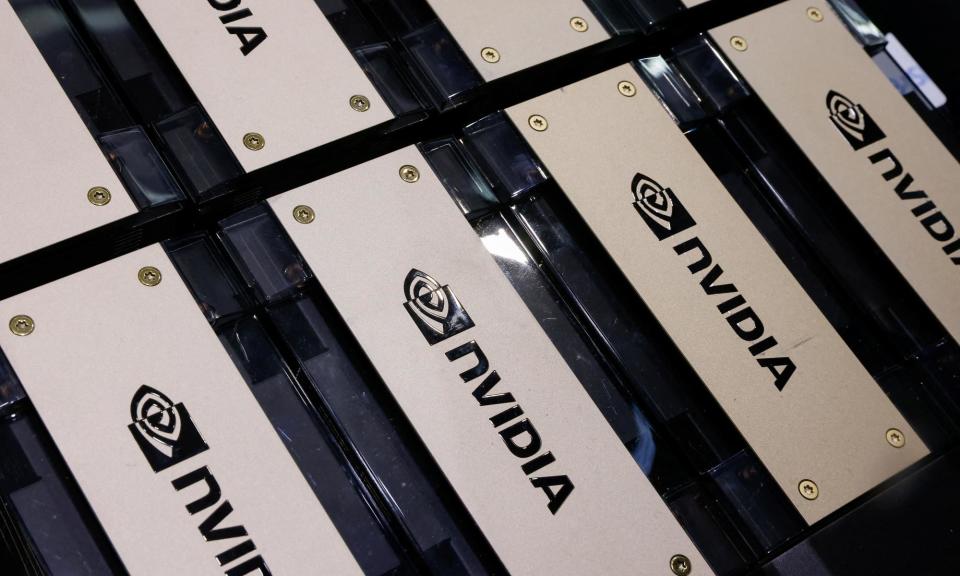‘Amazing Grace’: the name behind Nvidia’s $2tn chip empire

In the arid tech sphere of semiconductor manufacturing, one hardback book-sized processor stands out: Nvidia’s H-100. On Friday, the Santa Clara, California, company surpassed $2tn in valuation. Where it goes next will be down to a chip named after “Amazing Grace” Hopper, a US navy rear admiral who became instrumental in the development of design and implementation of programming languages.
Related: Why has Nvidia driven stock markets to record highs?
Nvidia supplies approximately 80% of the global market in chips used in AI applications. The company’s H-100 chips – the H is for Hopper – are now so valuable they have to be transported by armored car, the Wall Street Journal reported on Friday, and demand is so great that some customers are waiting as long as six months to receive it.
The importance of Hopper to Nvidia, and to AI computing more generally, was underscored last summer when Jensen Huang, founder and CEO of Nvidia, named its next generation of accelerated computing and generative AI chips the GH200 Grace Hopper Superchip.
Hopper was born in 1906 in New York City, graduated from Vassar College with degrees in mathematics and physics in 1928, and joined the navy after the US joined the second world war following the bombing of Pearl Harbor.
According to a Yale University biography, she was initially rejected by the navy because of her age and diminutive size, but once commissioned she was assigned to the Bureau of Ships computation project at Harvard, where she worked on the Mark I, the first US electromechanical computer, computing rocket trajectories, anti-aircraft gun range tables and calibrating minesweepers.
After the war, Hopper joined the Eckert-Mauchly Computer Corporation, later Sperry Rand, where she pioneered the idea of automatic programming. In 1952, she developed the first compiler, a program that translates written instructions into computer codes.
“What I was after in beginning English language [programming] was to bring another whole group of people able to use the computer easily … I kept calling for more user-friendly languages. Most of the stuff we get from academicians, computer science people, is in no way adapted to people,” Hopper explained in a 1980 interview.
Hopper retired from the navy as a rear admiral at the age of 79 – the oldest serving officer in the US armed forces. A year before her death in 1992, she was awarded the National Medal of Technology by President George HW Bush. She was posthumously awarded the Presidential Medal of Freedom, the nation’s highest civilian honor, in 2016.
In a 1983 interview with 60 Minutes, Hopper was asked if the computer revolution was over. Hopper replied: “No, we’re only at the beginning … We’ve got the Model T.”